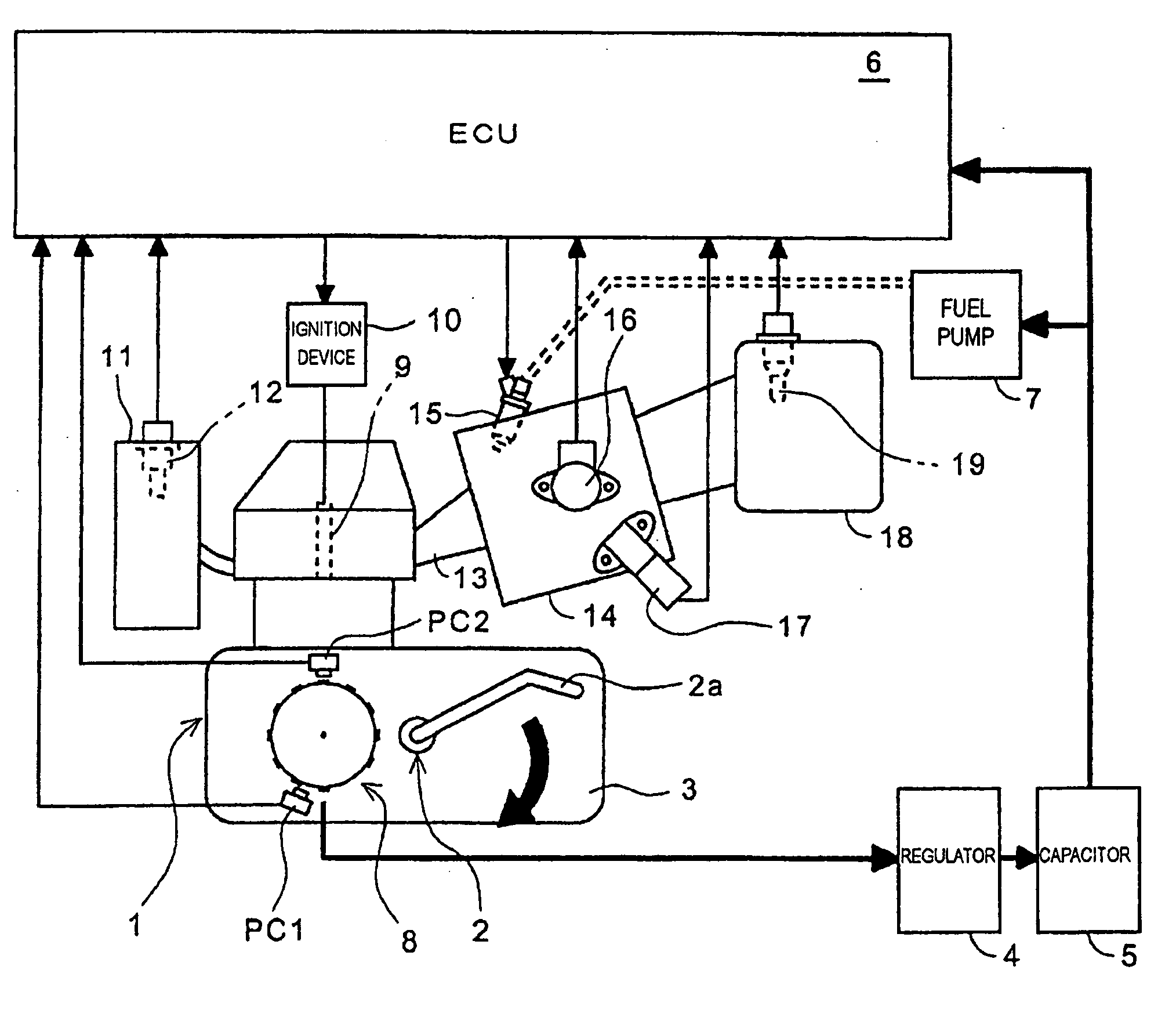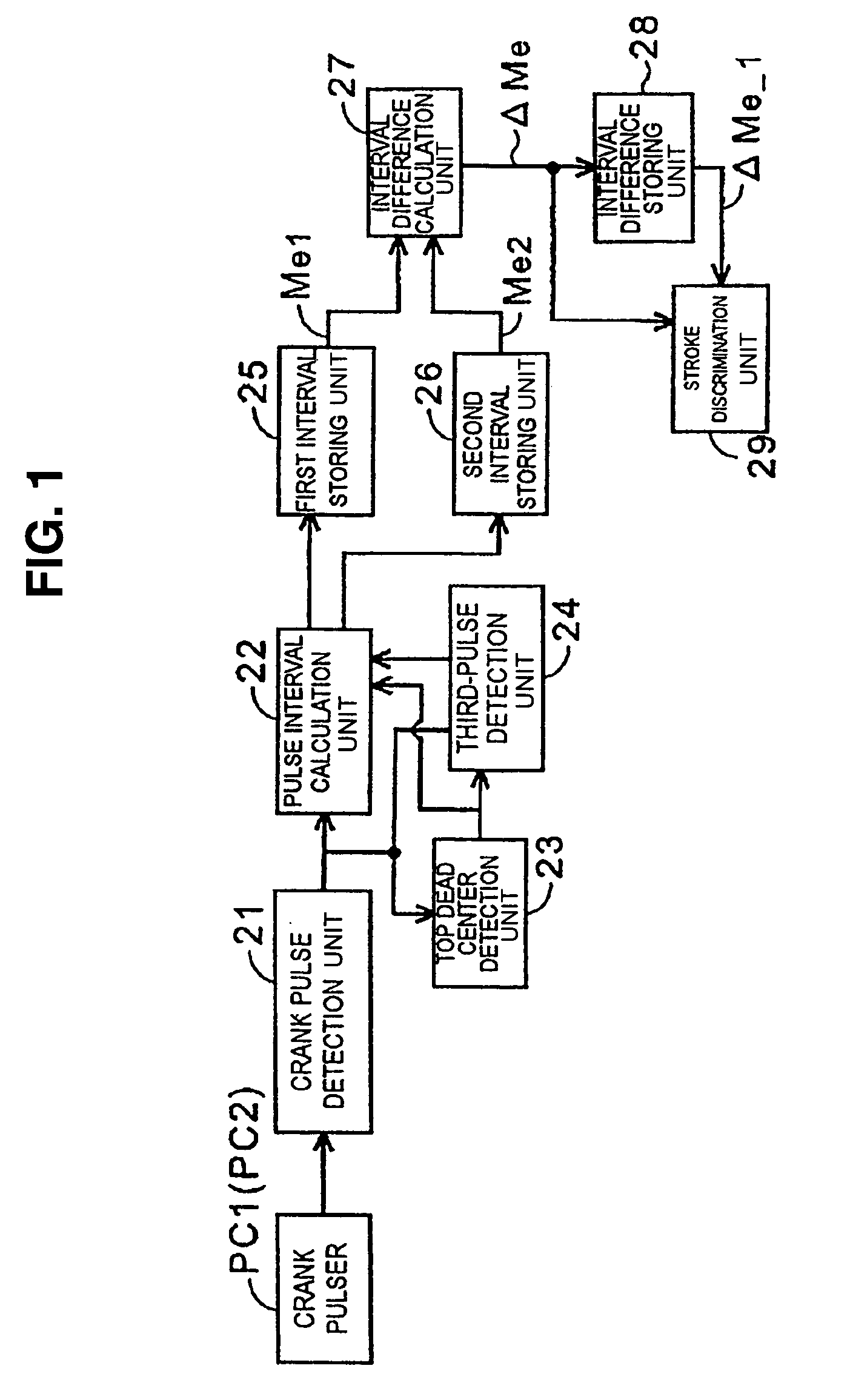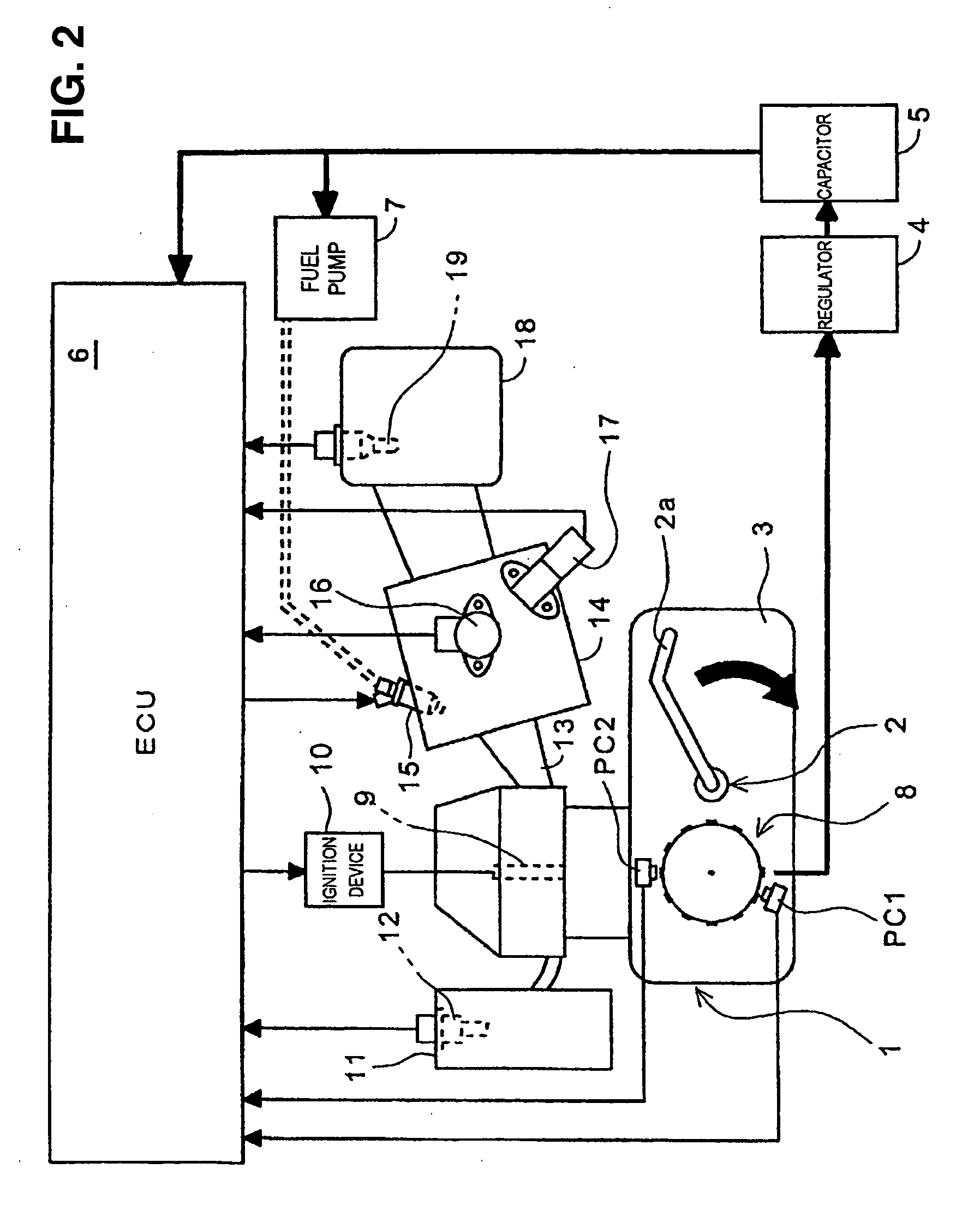Method and apparatus for detecting a stroke of a 4-cycle internal combustion engine, based on changes in rotary engine speed
a technology of internal combustion engine and speed change, which is applied in the direction of engine testing, structural/machine measurement, electrical control, etc., can solve the problems of engine peak performance, inability to perform manifold vacuum, and inability to detect a stroke based on such intake manifold vacuum, etc., and achieve the effect of reducing the rate of change of rotary engine speed
- Summary
- Abstract
- Description
- Claims
- Application Information
AI Technical Summary
Benefits of technology
Problems solved by technology
Method used
Image
Examples
Embodiment Construction
[0037]It should be understood that only structures considered necessary for illustrating selected embodiments of the present invention are described herein. Other conventional structures, and those of ancillary and auxiliary components of the system, will be known and understood by those skilled in the art.
[0038]Hereinafter, an illustrative embodiment of the present invention is explained in conjunction with drawings. FIG. 2 is a block diagram showing a system configuration of an engine control apparatus including a stroke detection apparatus according to an illustrative embodiment of the present invention.
[0039]In the embodiment shown in FIG. 2, an engine 1 is a 4-cycle, single-cylinder internal combustion engine. The engine 1 includes an intake / exhaust valve assembly (not shown). The engine 1 also includes a kick-starter 2, having a kick pedal 2a, as a manual starting system. An operator of a vehicle having the engine 1 can start the engine 1 by rotating a crankshaft (not shown) b...
PUM
 Login to View More
Login to View More Abstract
Description
Claims
Application Information
 Login to View More
Login to View More - R&D
- Intellectual Property
- Life Sciences
- Materials
- Tech Scout
- Unparalleled Data Quality
- Higher Quality Content
- 60% Fewer Hallucinations
Browse by: Latest US Patents, China's latest patents, Technical Efficacy Thesaurus, Application Domain, Technology Topic, Popular Technical Reports.
© 2025 PatSnap. All rights reserved.Legal|Privacy policy|Modern Slavery Act Transparency Statement|Sitemap|About US| Contact US: help@patsnap.com



